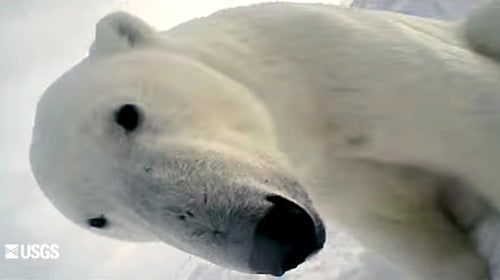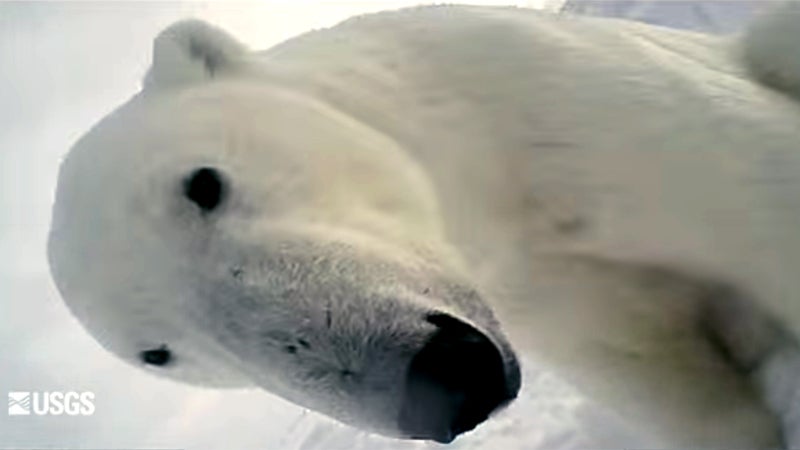It’s now possible to go to YouTube and watch a polar bear devour a seal, GoPro-style. The U.S. Geological Survey (USGS) attached video cameras to collars on four female polar bears living on Arctic sea ice and have released clips that give us an unprecedented view of polar bear life.
Even better (but also sadly), this footage will help scientists understand exactly how the bears are responding to sea-ice loss from climate change. Spring is a dicey time for researchers to study polar bears in person, because they have only about six weeks of sufficient light and stable ice in the Beaufort Sea area where these bears live. Now that the team has cameras strong enough for the Arctic temperatures, they can watch the bears dive under the ice, hunt for food, and interact with others.
That’s already yielded some surprises. The scientists said they weren’t expecting to see one of the bears and a potential mate playing around with a seal snack. “We’re not sure what that means,” USGS research leader Todd Atwood told the Associated Press. “It’s all information that we wouldn’t be able to get otherwise.”
It will give scientists a more complete idea of how the polar bears’ nutritional needs and energy exertion change alongside their habitat. Paired with other data, such as information from the collars on when the bears are hunting, swimming, resting, and walking, this will go into an upcoming Polar Bear Conservation Management Plan for the threatened species. Until then, it seems likely the scientists will collect more video from the bears after this successful test run—but we’ll be getting mostly the female perspective. Male bears’ necks are bigger than their heads, so their collars kept slipping off. Just another scientific discovery about the tough life of a polar bear.
Watch the clips for yourself—but be warned, polar bears don’t have the steadiest handle on videography.

